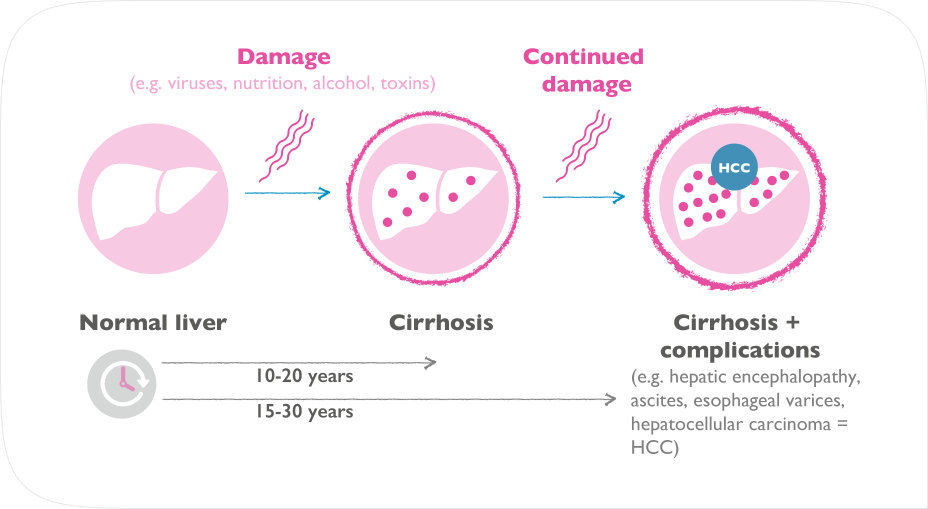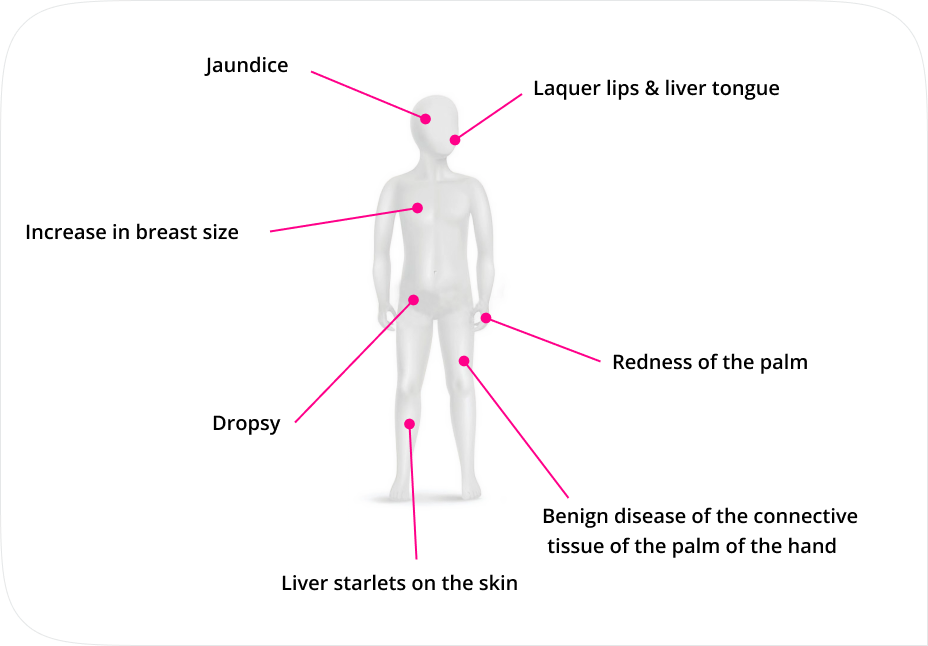Alternative therapies for people with liver disease
In addition to a healthy lifestyle, a healthy diet and possibly drug therapy, there are several alternative therapies that can have a ... | more
Liver Diseases

Liver cirrhosis is a chronic disease affecting the entire organ. If the underlying disease is not sufficiently treated or discovered too late, cirrhosis can change the liver structure over the years. In the long run, chronic damage inhibits the liver’s ability to regenerate and leads to the loss of liver cells. The liver tries to compensate for this loss and forms scarring tissue as a replacement. However, the new structures cannot fully retain the functions of a healthy liver.

As disease progresses, the liver hardens, becomes nodular and eventually shrinks. The blood supply to the liver is also severely impaired, so that the blood from the portal vein and hepatic artery can no longer flow properly through the liver and accumulates. As a result, portal vein hypertension develops.


Typical symptoms for liver disease:
Examining your abdomen can help identify an enlarged liver – a sign of inflammation.
Higher than normal liver enzymes can be a sign for liver inflammation.
An ultrasound or other imaging studies, such as CT or MRI scans, can help detect fat in your liver.
A liver biopsy is the best way to diagnose a fatty liver. A small piece of tissue is removed and examined to determine the status of your liver.
To reduce the risk for fatty liver or in an early stage of the disease, following these general recommendations help you improve the health of your liver:
In addition to these recommendations, your doctor might consider putting you on medication that helps you improve your condition, e. g. a combination of amino acids which help detoxify the body.
A liver cirrhosis can be a life-threatening condition. In severe cases, a liver transplant is the only option to save a patient’s life.